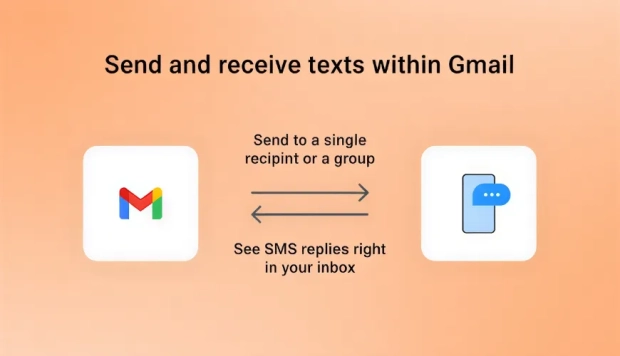Icons8 Ouch: Revolutionizing Professional Illustration Workflows
Professional design teams waste countless hours wrestling with inadequate visual assets. Custom illustration budgets spiral out of control while deadlines compress mercilessly. Marketing departments struggle to maintain brand consistency across expanding digital channels.
Stock illustration platforms flood the market with promises of easy solutions. Most deliver bloated libraries filled with irrelevant content, subscription models that punish growth, and technical limitations that create more problems than they solve.
Icons8's Ouch challenges this broken ecosystem with a fundamentally different approach. Instead of competing on volume or flashy features, it reimagines how visual assets should function within modern professional workflows. But does this reimagining deliver meaningful improvements?
Dismantling Traditional Asset Management Problems
Conventional illustration hunting follows a predictable pattern of frustration. Teams browse endless galleries searching for something remotely suitable. They compromise on style, color, or composition because perfect matches rarely exist. Projects are often adapted to fit around asset limitations, rather than assets being tailored to meet project needs.
This backwards approach constrains creative decisions and damages design quality. When visual elements cannot adapt to specific requirements, compromise becomes inevitable. Brand consistency suffers when available assets don't align with established guidelines.
Ouch completely reverses this relationship through radical modularity. Every illustration consists of individually controllable components that creators can mix, modify, and rearrange without limitation. Characters exist independently from backgrounds. Objects move freely. Colors change instantly across all related elements.
This component-based system restores creative control to designers and content creators. Visual elements bend to project requirements instead of forcing projects to accommodate inventory constraints. Brand guidelines drive asset selection rather than being sacrificed for available options.
The technical foundation supports unlimited creative flexibility. SVG illustrations preserve their editable structure through multiple modifications. PNG exports include transparency automatically. Animation formats span from universal GIFs to sophisticated Lottie JSON files optimized for web performance.
Performance optimization receives careful attention throughout the platform. File sizes stay lean without sacrificing visual quality. Loading speeds remain fast across devices and connection types. Email compatibility prevents deliverability issues that oversized graphics typically trigger.
Professional Applications Across Industries
Software Development: Bridging Creative-Technical Gaps
Development teams understand this painful cycle: receive beautiful design mockups featuring specific illustrations, discover that those exact assets don't exist in implementable formats, compromise visual quality to meet project deadlines, and disappoint stakeholders expecting pixel-perfect results.
Ouch eliminates this friction through genuinely developer-friendly specifications. Clean file structures support automated processing. Naming conventions make sense for programmatic handling. Multiple export formats ensure compatibility across frameworks without requiring conversion tools.
API integration transforms asset management from manual drudgery to an automated workflow component. Development teams pull illustrations directly into build processes and content systems. Performance stays predictable across different technical environments without requiring extensive optimization work.
Marketing Operations: Content Velocity Without Brand Compromise
Content marketing demands create impossible pressures on creative resources. Social platforms require constant visual refreshment. Email campaigns need engaging graphics. Blog content demands supporting imagery. Brand standards must remain consistent throughout.
Traditional solutions force brutal trade-offs. Generic stock imagery lacks distinctiveness and brand alignment. Custom illustration work exceeds budgets and timeline constraints. Neither approach supports the content velocity modern marketing requires.
Ouch's modular approach resolves these tensions effectively. Marketing teams create multiple asset variations from a single base illustration while maintaining perfect brand consistency. Color schemes adapt automatically. Layout elements rearrange for different platforms seamlessly.
Production speed increases dramatically when teams can iterate on visual concepts immediately. Campaign adjustments happen in real-time. Competitive responses don't require emergency budget allocations or rushed custom work.
Educational Applications: Purpose-Built Visual Learning
Academic institutions face constraints that commercial platforms consistently ignore. Limited budgets, complex concepts requiring visual clarification, and learning objectives that must drive design decisions rather than aesthetic preferences.
Generic corporate imagery fails in educational contexts. Business photos don't help students understand scientific processes or historical events. Random decorative illustrations often distract from learning rather than supporting it.
Ouch addresses educational needs through subject-specific collections organized around academic disciplines. The sheep clipart section provides agriculturally accurate livestock representations suitable for biology, agriculture, and environmental science curricula.
Customization becomes essential for pedagogical effectiveness. Educators modify illustrations to emphasize specific learning points without commissioning expensive custom artwork and teaching animal husbandry. Highlight different breeding characteristics using color coding and explaining agricultural ecosystems. Adjust visual emphasis to focus on particular environmental relationships.
Educational research demonstrates consistent improvements in comprehension when complex concepts receive appropriate visual support designed for learning rather than decoration.
Startup Economics: Professional Standards on Bootstrap Budgets
New businesses confront harsh realities about visual credibility. Professional appearance directly impacts customer trust and investor confidence. Yet custom design work typically costs more than entire marketing budgets and requires timelines that exceed launch windows.
Most early-stage companies compromise visual quality during crucial growth phases when first impressions determine long-term market positioning. Amateur-looking graphics signal resource constraints that undermine credibility when it matters most.
Ouch provides sustainable alternatives without sacrificing professional standards. Free usage supports MVP development and internal tools—subscription pricing scales with business growth instead of demanding massive upfront investments.
The component-based system accommodates rapid business evolution. Visual identity elements get established early and adapted as products, positioning, and market focus evolve. Strategic pivots don't require complete visual overhauls.
Technical Excellence: Engineering for Real-World Performance
Browser-Based Editing: Professional Tools Without Software Barriers
Web-based creative tools traditionally disappoint professional users through performance limitations and restricted functionality. Mega Creator breaks these constraints with optimized architecture, delivering desktop-quality responsiveness in browser environments.
Real-time editing provides immediate visual feedback without processing delays. Element manipulation responds instantly to user input. This performance enables non-technical team members to make sophisticated adjustments without specialized software training.
Collaborative functionality works seamlessly when multiple users can work simultaneously without degradation. Creative decision-making accelerates when stakeholders see changes immediately instead of waiting for formal presentations.
Comprehensive Format Support: Universal Implementation Compatibility
Technical compatibility determines practical usability more than marketing features suggest. Ouch delivers exhaustive format support that functions reliably across different platforms and technical requirements.
Lottie JSON enables advanced web animations without the performance costs that traditional video formats impose. After Effects integration supports professional motion graphics workflows. Standard formats like GIF and MOV ensure universal compatibility across legacy systems and modern platforms.
SVG maintains infinite scalability without quality loss. File optimization ensures efficient loading without compromising visual quality or mobile performance. Email compatibility prevents deliverability problems that oversized graphics consistently create.
Strategic Value Assessment: Quantifying Real Business Impact
Platform effectiveness must be measured through actual productivity improvements rather than feature comparisons. Ouch addresses specific bottlenecks, creating measurable inefficiencies in professional workflows.
Asset discovery time decreases substantially through intelligent organization and search capabilities. Brand consistency improves through systematic style coherence within collections. Production velocity increases through customization, eliminating repetitive start-from-scratch workflows.
Direct cost savings from reduced custom design requirements frequently exceed platform expenses by substantial margins. Workflow efficiency improvements enable higher-value activities instead of excessive tactical production work.
The visual asset marketplace includes diverse approaches with different strengths and limitations. Some competitors emphasize massive libraries with minimal customization. Others prioritize animation capabilities but lack style consistency. Ouch occupies a specific niche focused on systematic customization combined with professional-grade technical implementation.
Implementation Strategy and Critical Assessment
Successful adoption requires a realistic evaluation of organizational capabilities and requirements. Visual content needs vary dramatically across industries and team sizes. Organizations with regular illustration requirements typically derive maximum value from comprehensive platform capabilities.
Platform optimization demands systematic approaches rather than random usage patterns. Clear guidelines for asset selection maintain visual consistency across projects and team members. Training investments accelerate adoption and maximize value realization.
No platform addresses every visual communication requirement regardless of comprehensiveness. Highly specialized content often demands approaches exceeding general stock modification capabilities. Industry-specific requirements sometimes require precision that general libraries cannot provide through customization alone.
Honest evaluation helps determine when platform solutions work effectively versus when custom alternatives become necessary despite higher costs and longer timelines.
Future Evolution and Final Assessment
Digital design continues evolving with emerging technologies and changing user expectations. Platform evaluation should consider development roadmaps alongside current capabilities to avoid future migration requirements.
Animation and motion graphics become increasingly crucial as digital experiences incorporate more dynamic elements. Platform flexibility affects adaptation to changing organizational needs without forcing migration to different solutions.
Icons8's Ouch represents a systematic approach to visual asset management, addressing genuine productivity challenges in professional creative environments. Technical capabilities and format support provide measurable advantages for organizations with appropriate requirements and implementation strategies.
Strategic value depends on realistic organizational assessment and systematic deployment leveraging platform strengths while acknowledging inherent limitations. Success requires honest evaluation rather than assuming any solution addresses all visual content requirements effectively.
The creative industry benefits from platforms solving actual productivity problems rather than adding unnecessary complexity. Ouch advances constructively in this direction, though ultimate value depends on alignment with specific operational needs and resource constraints.



